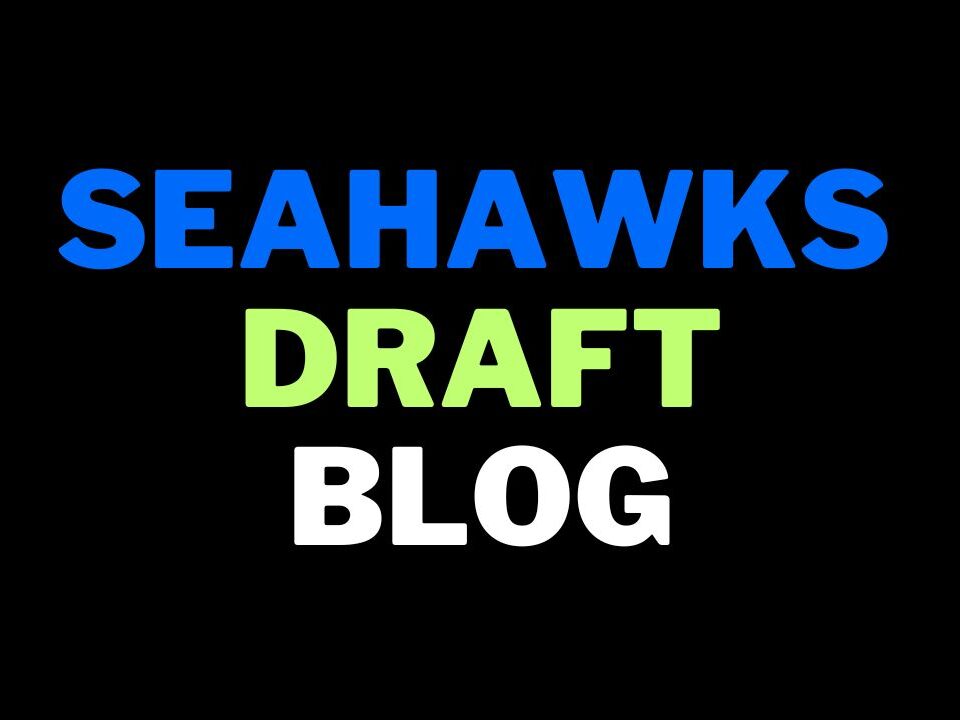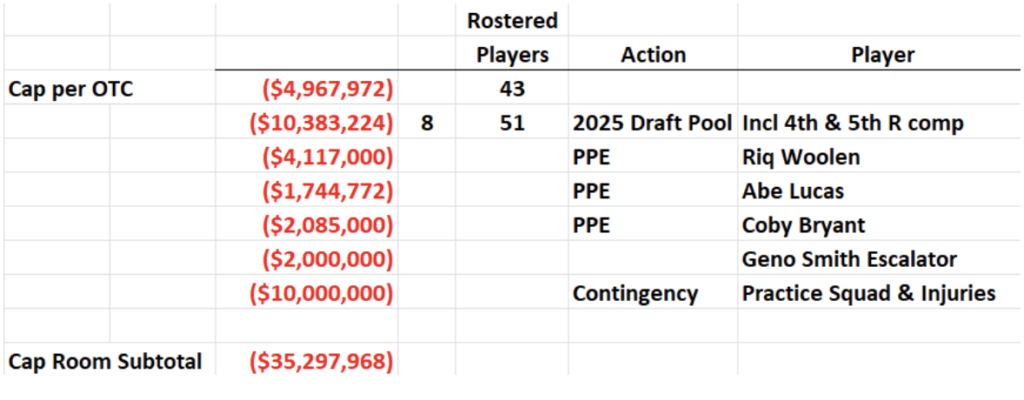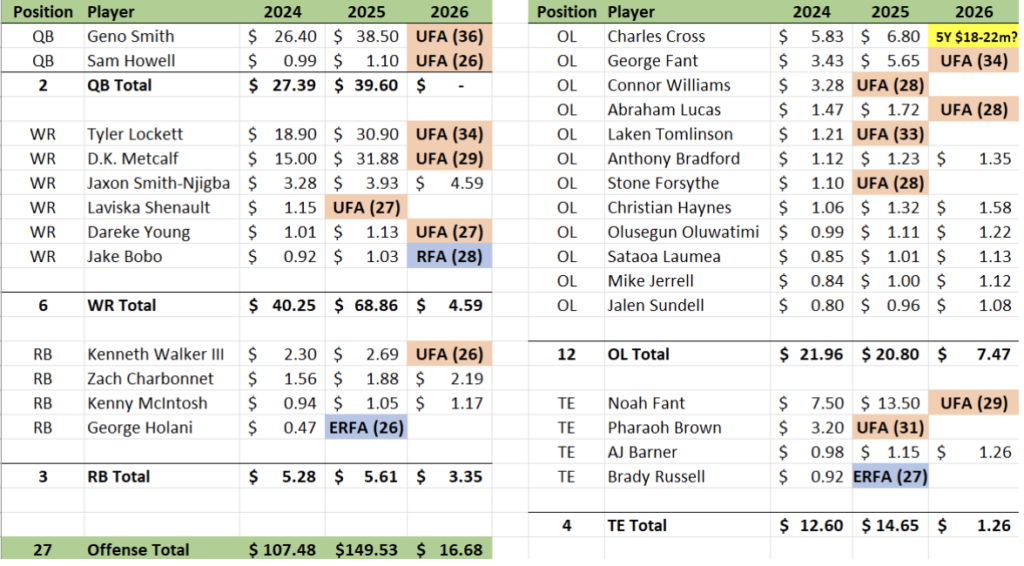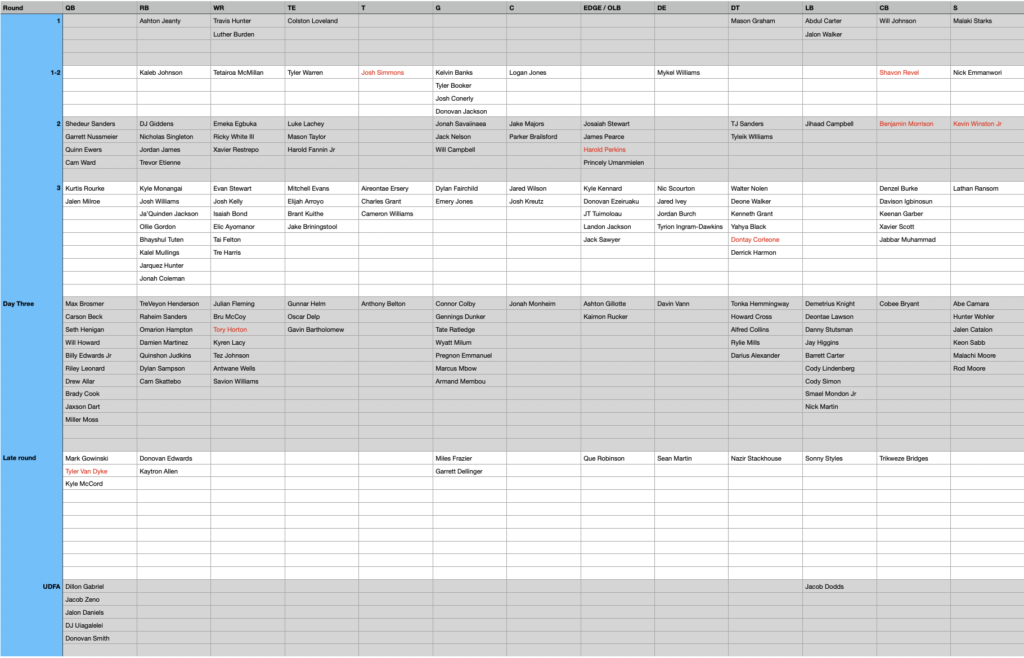
The Geno Smith discourse is impacting my enjoyment of this football season.
Some of you will think this is mad. Others will agree, perhaps silently. I’ll try and explain what I mean.
Immediately after the 49ers win, it started.
If you think Smith is elite, a franchise quarterback, ‘the guy‘, ‘him‘, worthy of a massive extension at the soonest possible moment or something else along these lines, congratulations. You officially “know ball“.
It’s also, it seems, really important that you make everyone else who may not entirely share your argument know that they are idiots.
Just ignore it, you might say. There’s no escape from it. People you follow on social media will dabble in this. Or they’ll retweet people who do. You may not wish to unfollow them. Or, you’ll have likeminded folk who share your view send you the occasional screen grab so you can participate in a collective eye roll.
It’s not just one group. When Smith has a bad game, there’s a similar amount of nonsense from the other extreme side of the debate. You’ll get people saying he’s no good, needs to be replaced ASAP, send Sam Howell in for the next game etc.
Every game is just one big toxic opportunity to have it out about Seattle’s quarterback on the internet.
Please, stop.
I’m not claiming to speak for the majority. I do think I speak for a reasonable portion of the fan base though, who fit somewhere between the two extremes on Smith, when I say I am well and truly bored to death by this.
Whether you like it or not, Smith’s future is going to be a storyline for the next off-season. How the rest of this season plays out will determine what eventually happens — but the debate isn’t going anywhere. And neither should it, as we’ll talk about in a bit.
Also whether you like it or not, Smith is clearly a net positive for the Seahawks in 2024. He is far better than Howell and until an obviously superior alternative emerges, there’s a very reasonable chance he will continue to be Seattle’s starter indefinitely.
The sooner we just accept both of these things the better. So much energy is being channeled in a tit-for-tat online battle on this subject and it’s taking a lot of joy out of wins like yesterday. I know I’m not alone in thinking this because several people have said the same thing to me privately — and I suspect others will say the same in the comments section in response to this article.
Personally I think Smith has played mostly very well this year. He’s faced a high degree of adversity because of the poor play of the offensive line and a non-existent running attack. The Seahawks rely a ton on their quarterback in their current form.
Physically he’s extremely impressive, particular for a player who recently turned 34. His arm strength combined with his willingness to attempt throws many quarterbacks wouldn’t dare to attempt makes for an often entertaining outcome, win or lose. There are throws over the last three years from Smith that are legitimately as good as anything you’ll see in the NFL.
There are also moments of erraticism. We saw it with the interception on Sunday. He is tied for the most interceptions in the NFL this year. Some clearly haven’t been his fault but he’s also recorded 11 turnover worthy plays in his last eight games per PFF. He does feel like a player who will give an opponent a decent shot at a turnover per game.
From about six games into the 2022 season, I’ve consistently said I’m perfectly happy with Geno Smith being Seattle’s starter until a clear, superior option comes along. I’m not sure that player is in the 2025 draft. If he is, it won’t be right away as a rookie. They may well draft someone to develop but I think it’s a near certainty they won’t be taking a quarterback next April in round one with the intention of starting them next year.
Equally, I don’t see a clear upgrade on the veteran market either. I don’t think the Seahawks should ‘get rid’ of Smith just because he’s maybe not as trendy or young as some other quarterbacks. The Chiefs played a blinder trading for Alex Smith and then biding their time to draft Patrick Mahomes. Eventually, the Seahawks will probably have to do something similar. But there’s no rush. They don’t ‘have‘ to do that in 2025. With Smith, they can wait for a player they love, not force a bad decision to aggressively pursue someone they only like.
While taking this approach, I am still sceptical that Smith will lead the Seahawks to the promise land. At the very least he will need a top supporting cast. I appreciate virtually every other quarterback is in the same boat. The thing is, the Seahawks aren’t close to having a top supporting cast. In order to build that, they might need to create the cap space and resource to construct a team that is placed to be a serious contender.
Overthecap has the Seahawks $15m in the red next season for effective cap space. It’s unavoidable to discuss what is best for the future of the team, with a fair amount of money saving required. Should they extend D.K. Metcalf’s contract and commit a major salary to a receiver? Do they need to make difficult decisions on players like Uchenna Nwosu and Dre’Mont Jones? Is it inevitable that franchise favourite Tyler Lockett is coming to the end of his time in Seattle?
Everything should be on the table — including the debate over Smith’s future. He is due $38.5m next year, with a further $2m inevitably on the cards when he hits the yardage escalator in his contract. It’s nothing to do with Smith’s perceived quality that you have a conversation about his future, much in the way you’re not questioning Metcalf over his.
How do the timelines of Smith and Metcalf’s peak years aline with Seattle’s ability to build a team to contend? Let’s say you pay them $45m and $32m a year respectively for the next three years. You secure their futures but will it prevent you from doing much of anything to make changes to key areas such as the offensive line and defense? Are you ultimately going to be left with the same team that has gone 9-8, 9-8 and now 5-5 over the last two-and-a-half seasons?
That isn’t to say you definitely can’t keep both, extend their contracts and still improve the team. The point is, simply, that any conversation should be on the table. The Seahawks are not in a healthy cap situation and the reality is it might take 2-3 years to get into a position where they are good enough in key areas to be a serious contender. By that point, Geno Smith will be 37. Is paying a massive contract at quarterback, with the team in its current form, the best plan? It might well be — but there’s nothing wrong with considering alternatives. After all, the team swapped one expensive quarterback (Russell Wilson) for a much cheaper one (Geno Smith) in 2022 and didn’t suffer.
Also, what amount becomes ‘too much’ for Smith? The current trend in the NFL is to give any quarterback who has either been drafted early or shown any promise an enormous deal. Is that the right approach to take? Or should teams set out to try and find greater value at the position, as the Seahawks did in 2022? The Vikings and Steelers are doing well with a cheaper approach to the position this year, while well-coached rookies are also succeeding.
Adding to this is the fact Smith is contracted for 2025. The Seahawks, technically, don’t have to do anything. Given Smith’s age, it won’t be a terrible plan to go year-by-year. He’s next scheduled to be a free agent in 2026, the year he turns 36. Given he didn’t have a hot free agency market in 2023, it might be best to let him establish his market in the future — if indeed the situation remains as it is today in about 15 months time.
None of this feels unreasonable to me. Yet online there is this quite aggressive undercurrent from a select number of people with prominent followings. The term ‘Geno haters’ is used frequently. It’s often implied you are pretty stupid, ignorant or simply don’t know anything about football unless you believe Smith is essentially Seattle’s answer to Josh Allen.
And again, I understand there are also fans who refuse to accept Smith ever plays well or is deserving of praise. For whatever reason though, they seem easier to ignore. They tend to be people with small (or no) followings. They aren’t on podcasts, streams, blogs or work for big media outlets. They aren’t names within Seahawks twitter. They are, by and large, just a very vocal minority.
They definitely contribute to the energy draining experience of this whole debate but I do hold the other side mostly responsible. They are far more aggressive and personal.
The Seahawks win a big game? Great. Time to put on your armour and go to war with everyone who doesn’t share your view on Geno Smith. It’s time for battle. Charge! Hand me that smart phone, I’m going in.
Maybe it’s just shit-posting and I’ve fallen into the trap? Maybe it’s doing whatever works for content creation and views/clicks? Maybe it’s just important to associate yourself with a ‘take’ these days? Whatever it is, it’s making this team less fun to follow.
I remember the days when a great win was celebrated together. Everyone just sharing the joy of victory. It’s starting to feel like some people are more invested in their position on Geno Smith than they are actually being a Seahawks fan.
I suppose it’s not surprising, though. This is the same fanbase that drew battle lines over ‘running backs don’t matter’ and spent a few years warring over that. Then there was the ‘Let Russ Cook’ cult until he was traded, then it was ‘spend every week being horrible about Russ’ instead. We had the ‘non-believers’ slamming anyone who dared to think there was a smidgen of a chance Wilson might be dealt (despite all of the glaring evidence showing it was a possibility). Now it’s Geno Smith’s turn to be in the middle of the latest thing where everyone has to pick a side and you’re either with us or against us.
We’re all Seahawks fans. Can’t we just get back to that?












